It´s very choppy and windy today. Although (as usual) the pictures cannot depict it really, the small but tough little Centaur keelboat gets a nice, pretty tough hammering by some nasty gusts. I am sailing together with my kids today. It´s our third time in a week on the lake. Our boat, number #13, has no name, but since itis so much fun for all, we christened her LUCKY 13. Up in the North a huge, water-soaked dark cloud formation is approaching fast, gusts become more frequent and violet. I can sense the fear in my smaller son, 8 years. Time to head home.
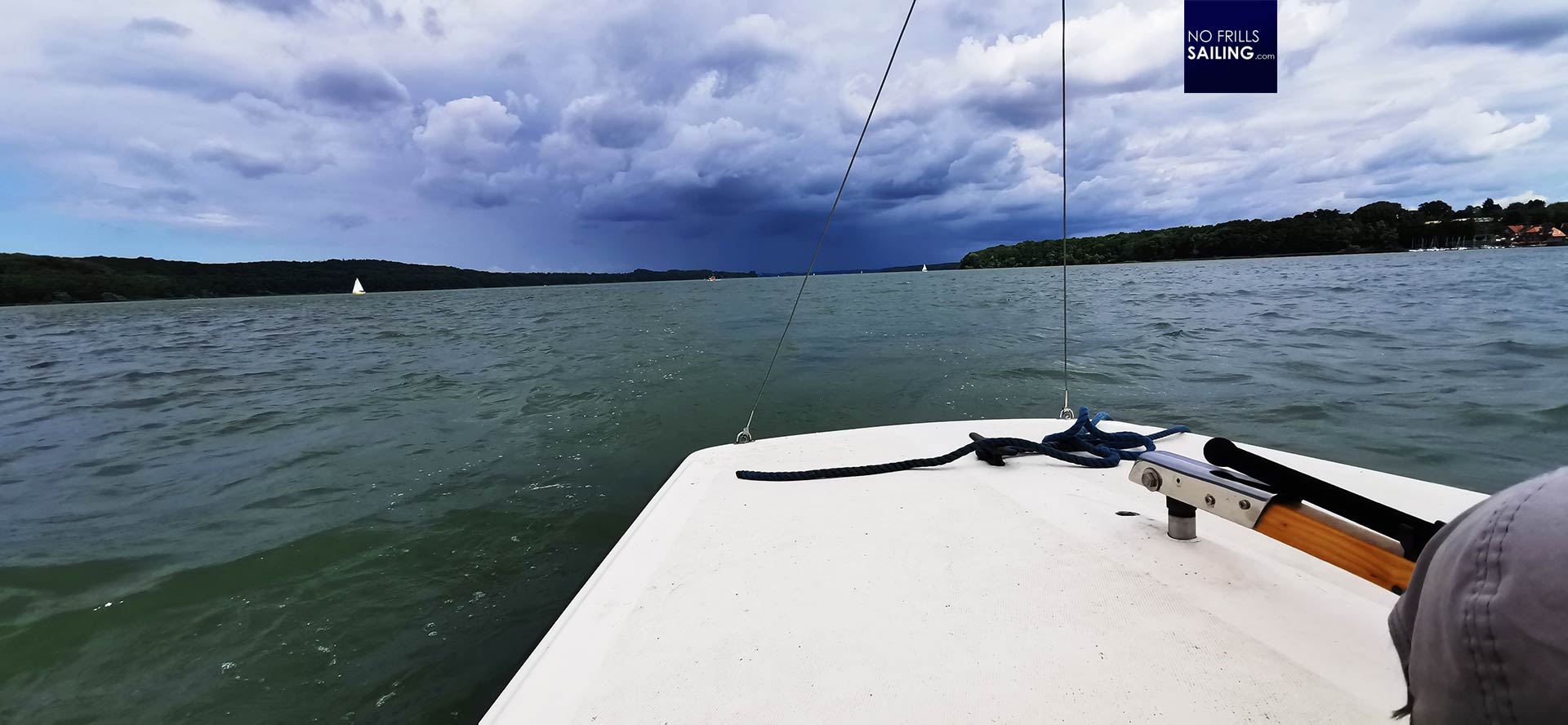
My kids (the oldest is 10 years now) have joined their first ever sailing club and started their professionally sailing “careers” on the Optimist. It´s fun for them, not only the sailing itself, but more the club life, the feeling of being part of a team and of course the adventure of sailing a boat – “free” from their parents. As a proud father and keen sailor myself, of course, I´d like to assist and facilitate their club sailing education. That´s the reason why we are out again today. But first things first …
Turning passengers into crew
My kids sail with me since they have been born. I remember bringing home our first ever boat, OLIVIA, right after we bought her. My first son was barely able to walk, spent most of the time sleeping in his Maxi Cosi, lashed to the leeward side, munching on the end of a line. Even if we were not heading out for whatever reason, I took them with me aboard GEKKO to bet familiar with the boat, marina rules and boat life in general. Or short and bigger sailing trips are still among one of their top vacations. And right so!
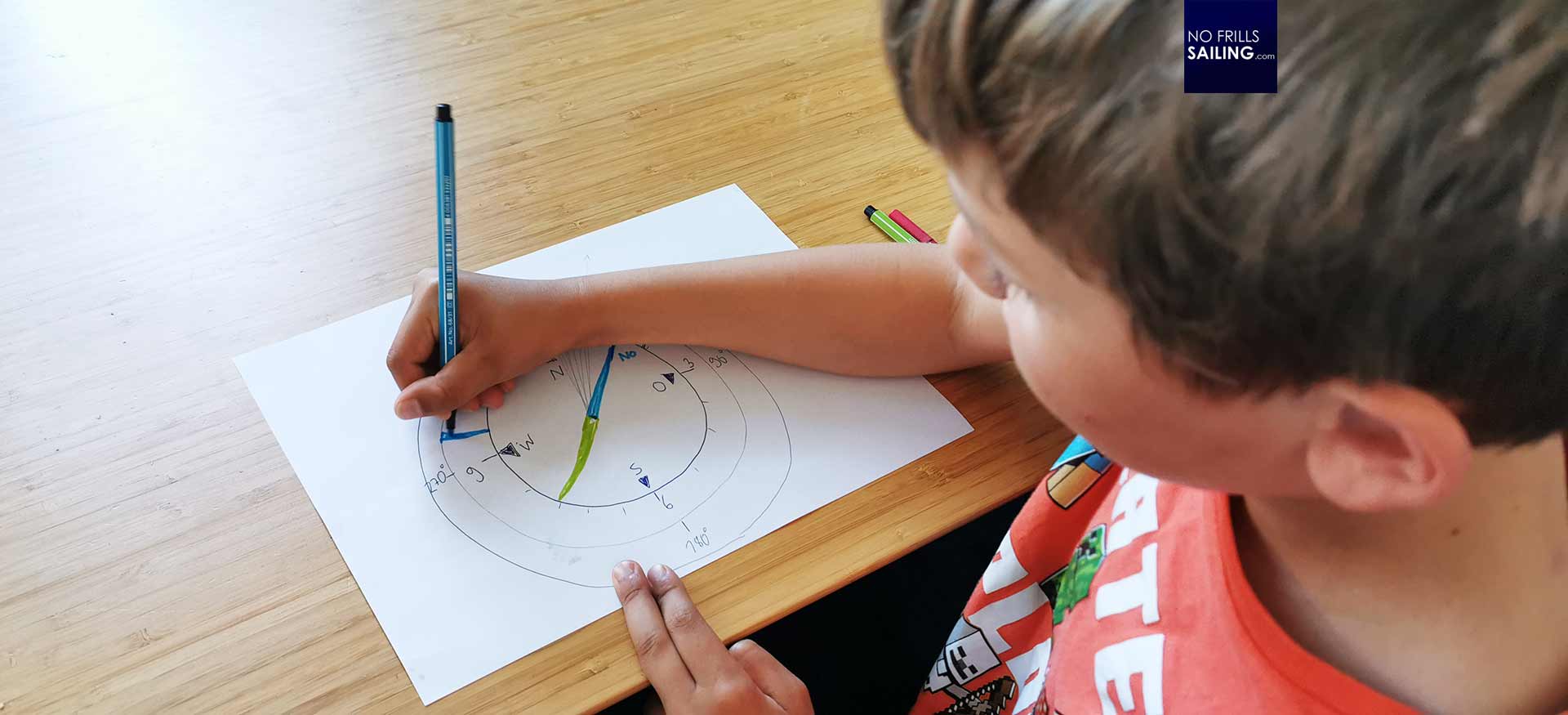
So – how can I support their sailing education in the club? At first, apparently, when on a boat, external input is so frequent and overloading that – at least my kids – have a very limited capacity to absorb information. They get distracted easily. So I usually start with some theory right after we cleared the breakfast table. For my younger son, learning how to announce a direction (in which something is seen or we want to sail) is priority number one. So we draw a simple rose and practice the correct terminology. Instead of yelling “There, over there! There is a boat!” he is now able to give a precise, short and seamanly information: “Boat on 6 o´clock approaching!”, “Wind blows from North-Northwest”. We even practice plotting a correct course with the 360 degrees compass rose.
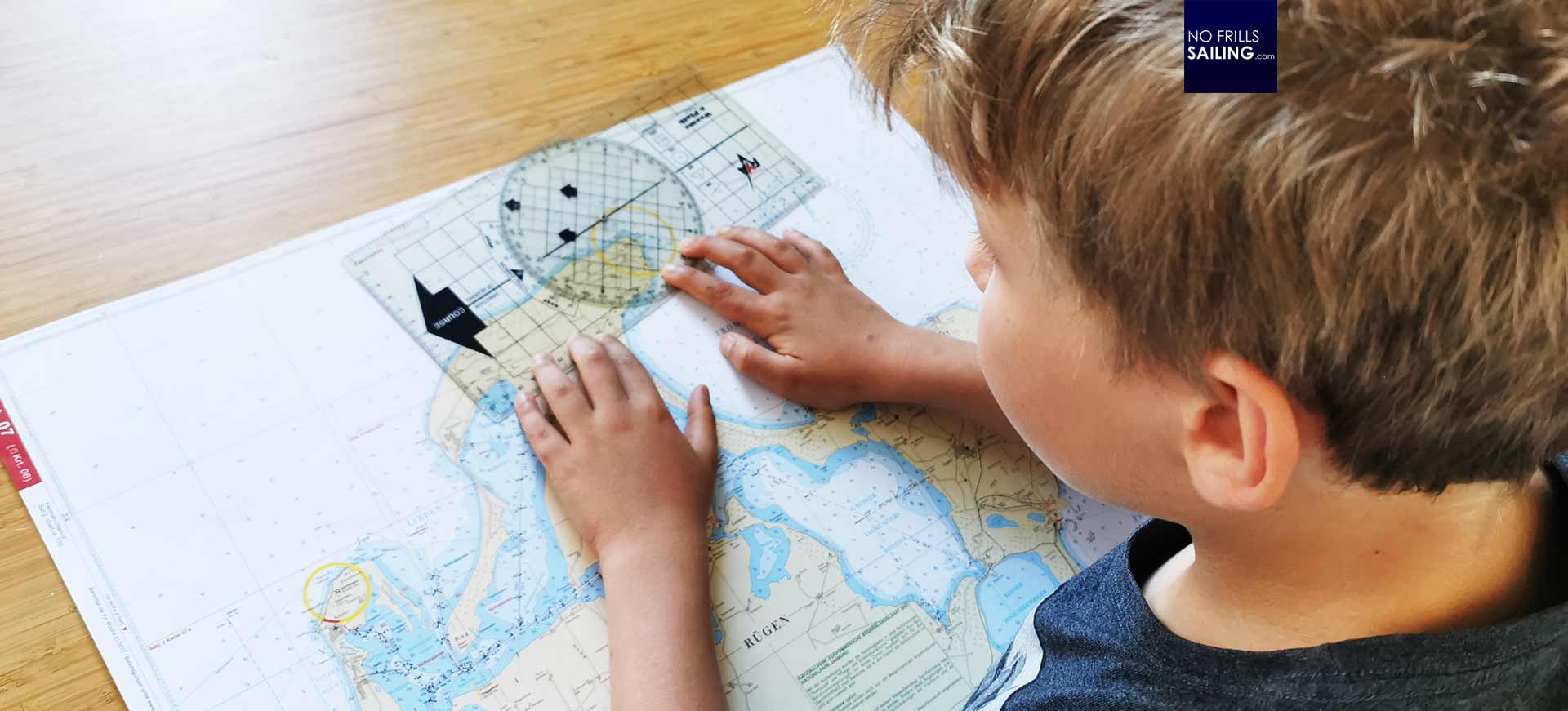
My aim is to slowly turn my kids from being mere passive passengers into active crew. We all know that sailing requires to literally learn a new language. All those terms and own words, a whole set of strange terminology. But it´s so much fun to do it. By using my course plotter and a naval chart of the Baltic Sea we announce exact courses from points A to points B. Repeating this every time before we go sailing slowly but surely facilitates not only this new language but also hard facts and important capabilities.
After-breakfast recap: At least a minimum of theory
My kids have their dedicated “jobs” on board. My older son for example is the bowman. His job is to operate the Jib sheets. In this, of course, knowledge of the points of sail is absolute basic. We do it in a playful manner. Kids love to sketch and paint. So I´ll have him sketch a boat, a rose and cut out a big wind arrow with his school-scissors. Two sails, representing the mainsail and Jib. And now let´s go …
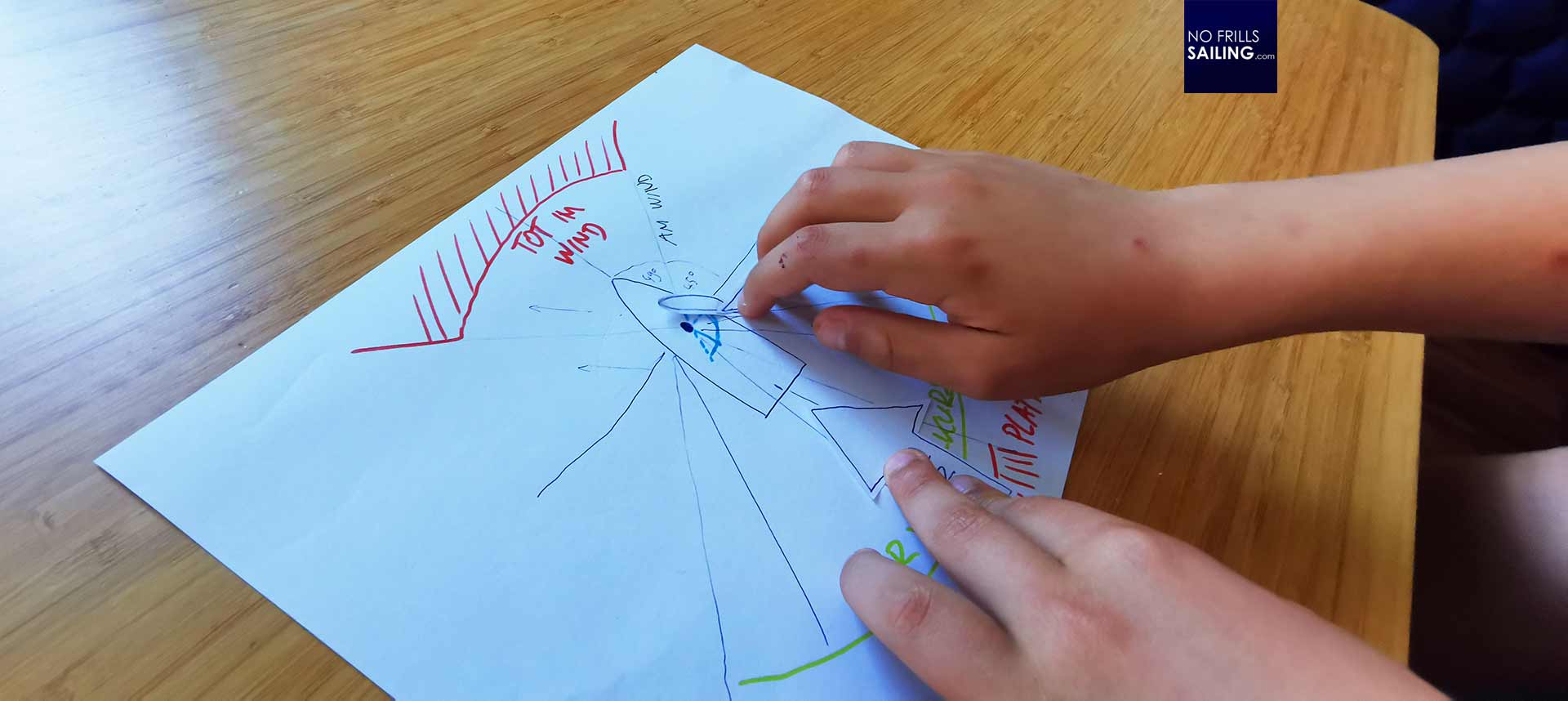
I start by having him shading out in plain red the “dead area” 90 degrees in front of our little depiction of LUCKY 13. That´s the red zone, no boat is able to sail right into the wind, I explain. Starting from here, we discover any point of sail from upwind to broad and beam reach – always adjusting our little paper sails accordingly. Testing if this has really arrived in his head, I ask him to show me the points of sails and the respective sails trim for the other tack. It works. They smile and celebrate every time they are right. This method is easy, cheap and I feel it kind of tickles their creativity somehow. By explaining – and playing – the points of sail, we can recap also the two main maneuvers: Tack and gybe. Since we´ve practice gybing and tacking last time, my idea for today´s dash out is to raise the bar a bit: Let´s do the “Figure 8” rescue maneuver. Of course, first, as a sketch:
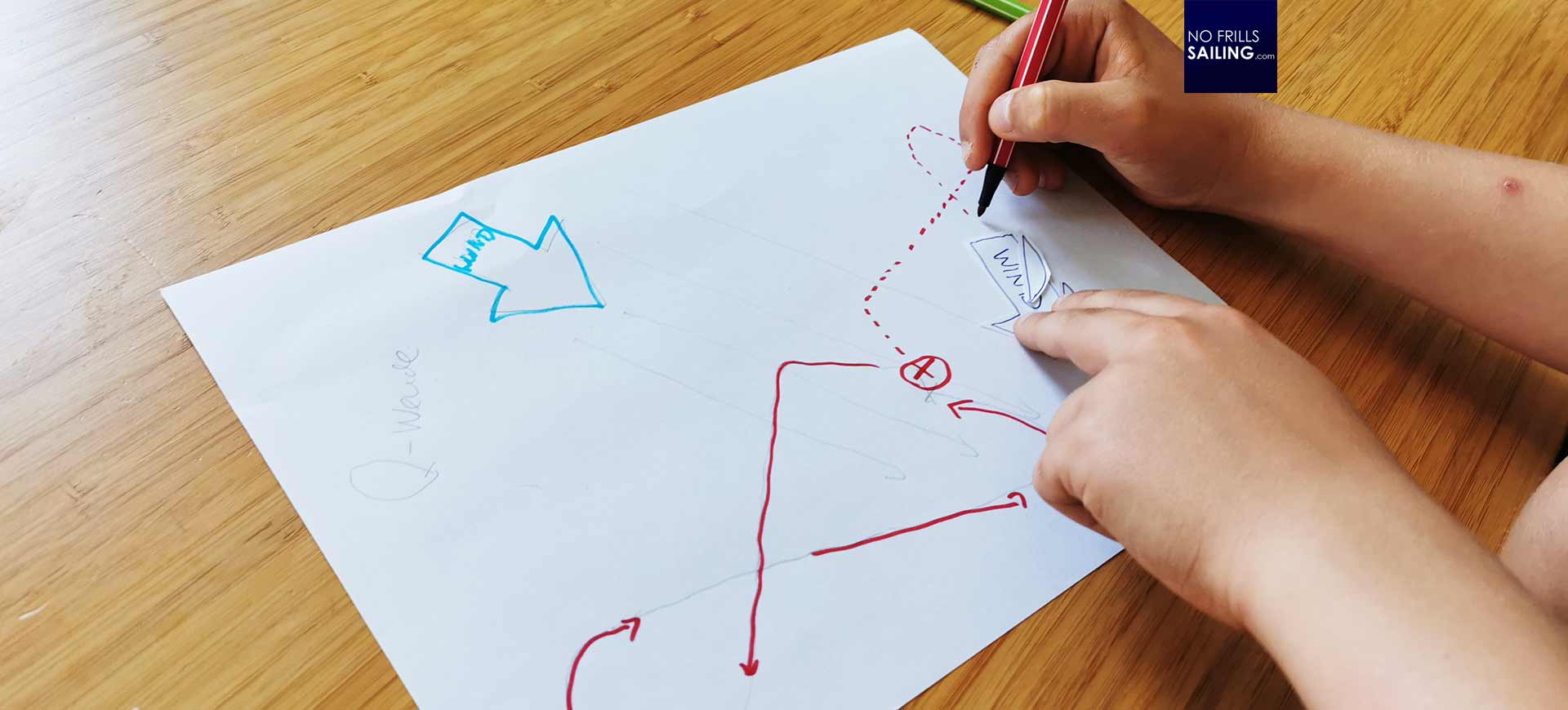
I know from my own sailing education some years ago that being able to not only control the boat, steer it and have it sailing in the directions we desired, but to really do something cool with the boat was utterly satisfying! Training and exercising the Figure 8, becoming better and better in conducting the MOB maneuver was absolute fun, made us proud and work together as a team. As a true crew. And so, first, we “sail” the Figure 8 in theory with our little paper-ship. Then it is time to jump into the car to drive to the nearby lake. We are all so excited!
Let´s go sailing!
I chose this particular spot because this is not only just a rent-a-boat place but a sailing school. That means that maintenance level of the boats is pretty high and the people running the company are sailing teachers. They know how to treat the little aspiring seafarers and – most beautiful – now during school´s summer vacation time, young ex-sailing cadets work here to earn a buck or two. One of them, sweet Maya, who herself learned sailing here 10 years ago, accompanies my kids, brings us to LUCKY 13 and helps us to hoist the main sail.
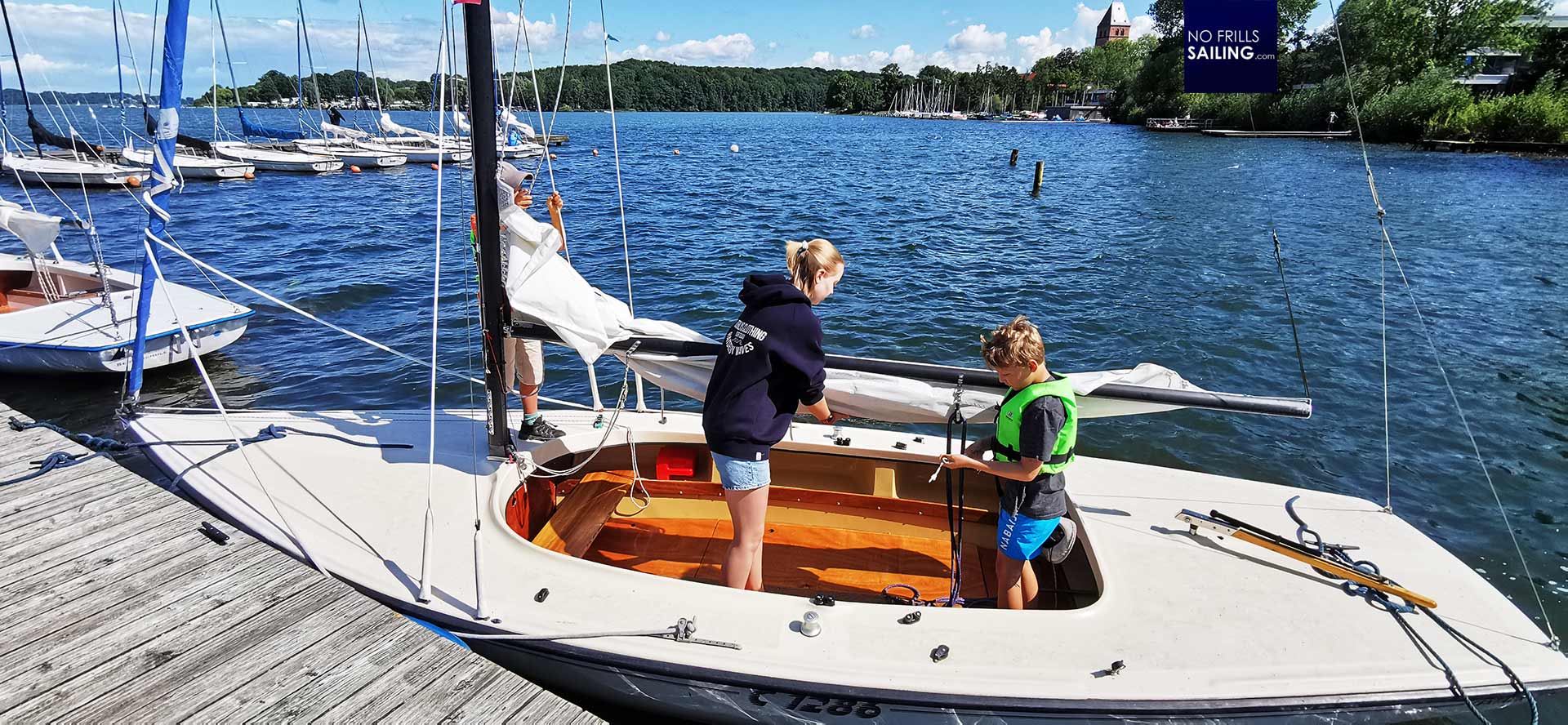
There´s a nice Westerly with 8 nots in average blowing. Not too much wind for a grown-up yacht, but a strong breeze already for my little crew and the Centaur-class dinghy. This is a keelboat with 12 square meters of sails area, a – very safe and comfortable – furling Jib and a mainsail with one reef. We cast off and beat upwind under full canvas. Sun and shade, bright blue sky and overcast with thick rain clouds is alternating. With clouds comes wind, another detail my kids earn quickly.
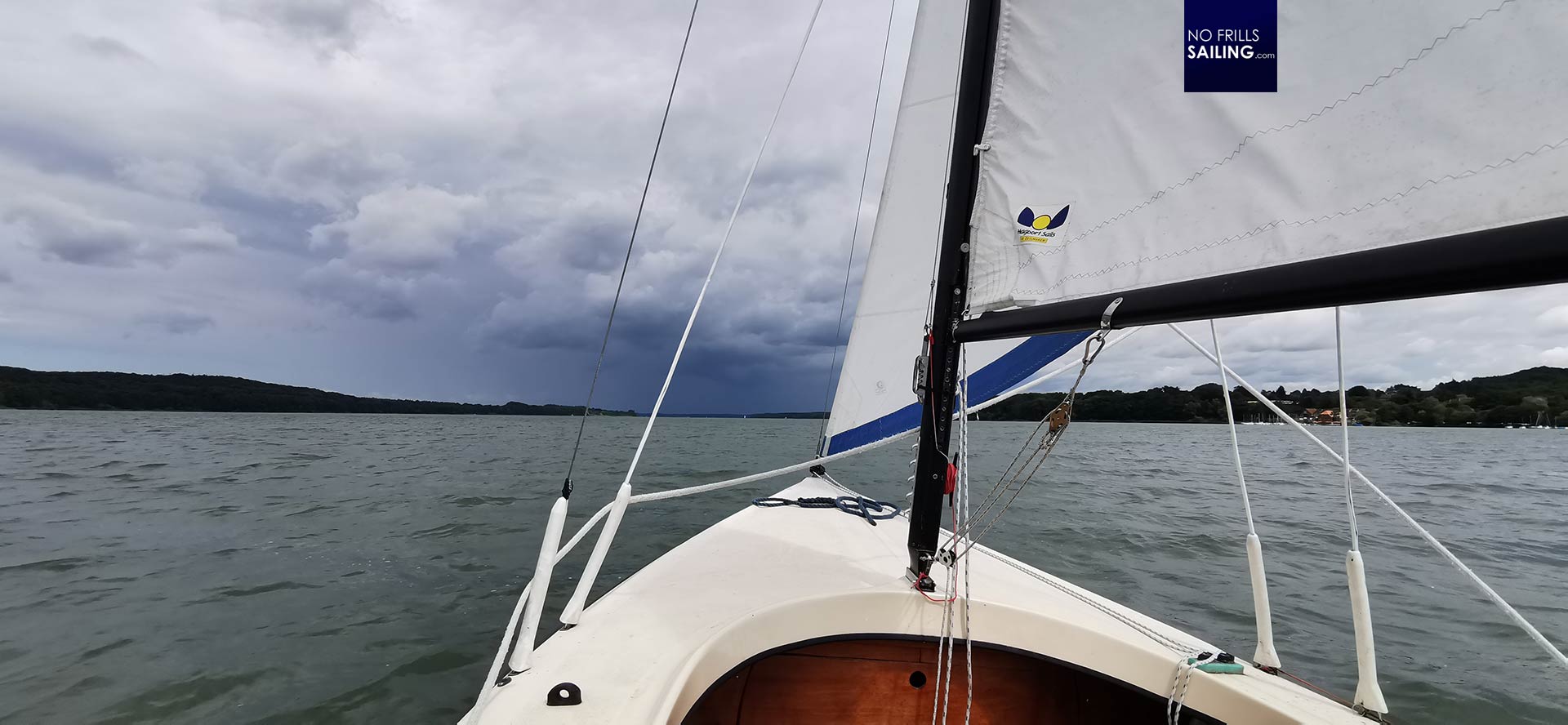
Now, let´s practice what we´ve played through on paper at home: I put my older son in charge of the Jib sheets. My small boy is a bit anxious because of the heeling and the nasty little gusts hitting us, making me open the main fast to avoid too much of hustle. I let him sit in the bow, just to accommodate. We practice the points of sails: Upwind, beam and broad reach. Sheeting in the sails, tacking and gybing all along. It´s much fun – but also “work” for the kids. With every tack, the impression of success prevails a bit more.
Demanding and stimulating
It is work though. Their first practicing days on the Optimist back in the sailing club consisted of steering, safe towing and – most of all – capsizing. Not too much sailing up until now. This is what we do instead: Trying to do the tacks in the most exact and fast way and having a gybe done as smoothly as possible. My older son works the sheets better and better. Pulling the ropes as if he had never done anything else. Every new tack is a little satisfaction. We tack LUCKY 13 farther away from the shore, out on the lake, where the gusts and little eddies from the nearby tree line are battering us.
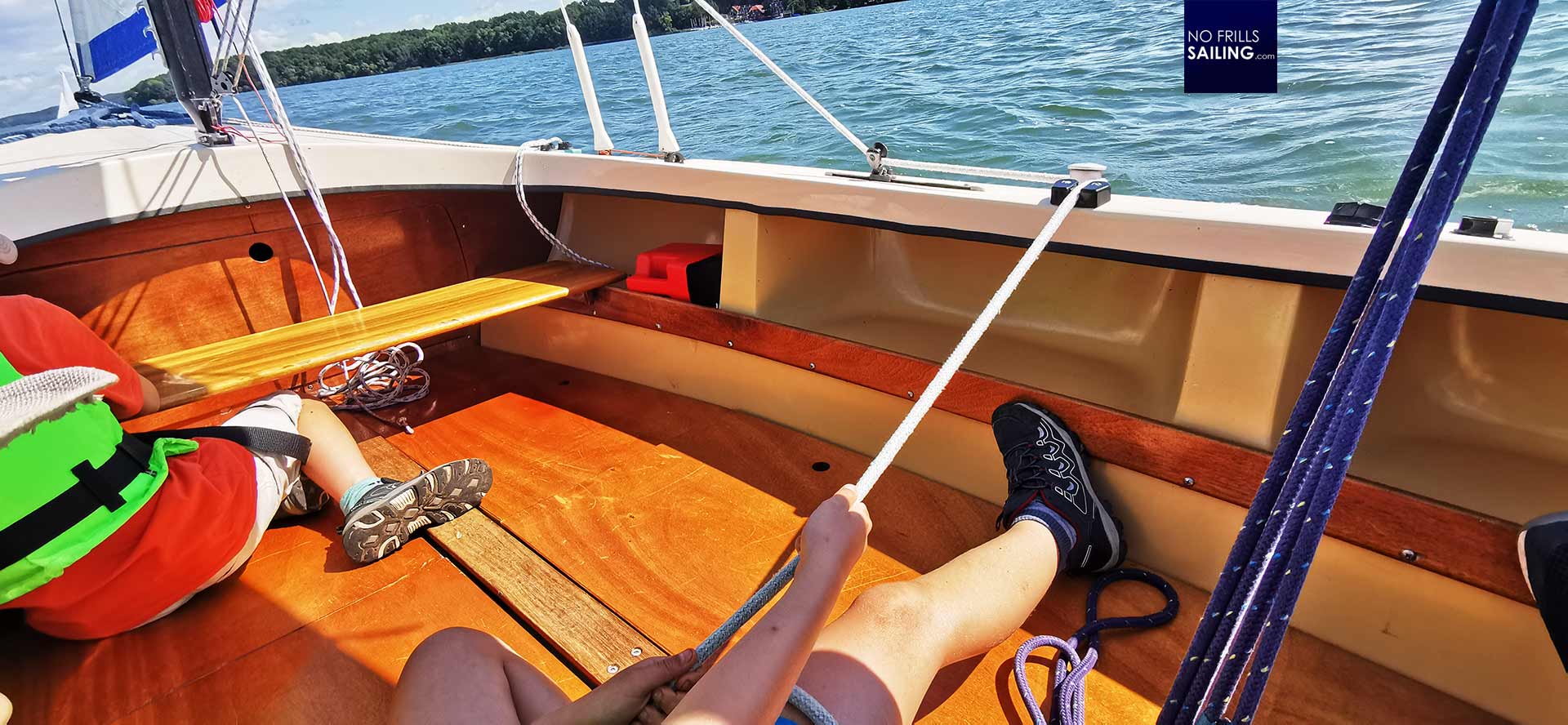
Slowly my younger son plucks up his courage. Up until now – because it is really a bit too much wind and the gusts are really annoying – he crunched near the mast and just watched. Changing sides to windward after each maneuver. To calm down his little heart, we bear away on a running course, bringing some calm to the boat. Sailing with the wind, no healing at all and the gusts magically “disappearing”, he finally agrees to take over the helm.
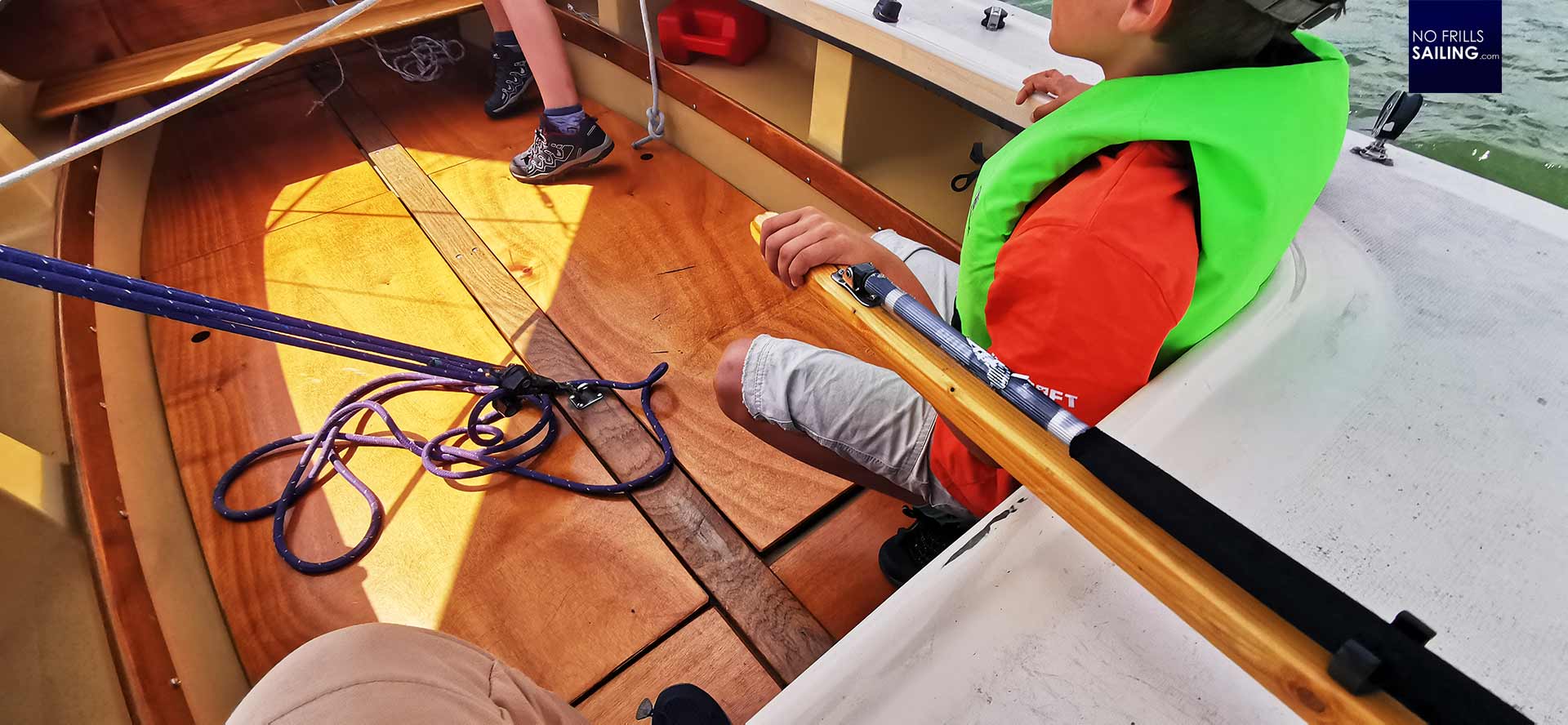
Sailing predominantly on downwind points of sails calms my little one down. He quickly finds back to a safe and confident way of steering the boat. For kids (also for adults) steering a boat by tiller can often be a problem. The counter-intuitive steering, meaning putting tiller to the opposite side of the direction you want to make the boat go, can be a problem. By reducing the stress in the rigging, the heeling, the howling of the wind and the immediate reaction of the boat to gusts, he can concentrate on the steering and is not diverted. This is a very important issue when training your kids: Don´t overstrain the kids and put too much stress onto them. Slowly, very slowly we luff ever more, sheet in the sails up until – kind of unnoticed – he finds himself on the upwind point of sail again. Let´s rock!
Facing fears and anxieties
Of course, it takes time for kids to adjust. And of course it is intimidating for a small kid to operate a boat, being responsible for the steering. Last time we sailed, we´ve had a mere 3 to 5 knots maximum of wind. These are almost perfect conditions for children when sailing the first times. Now, with an average 8 and gusts as high as 13, 15 knots, the Centaur starts to produce some excessive heeling when sailed close-hauled and tends to surf downwind. So much spray in the cockpit, fast heeling – fear may be the outcome.
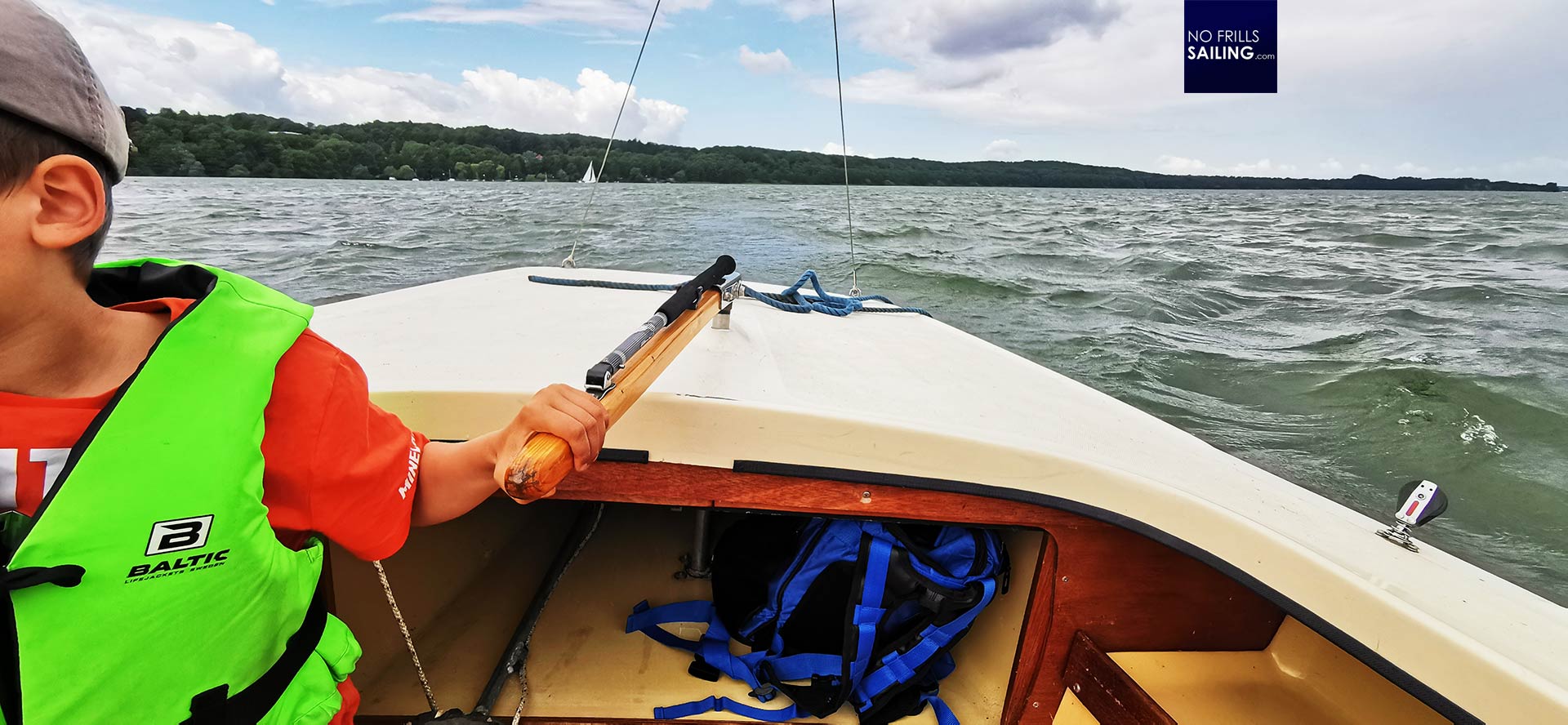
In this, as their “teacher”, you might always remain calm and confident. I try to not take the helm or the sheets (I am the mainsheet-guy) but rather encourage them to tackle the gust, give them advice how to lean out the gust, stick to the course and prevail. As much stress sailing in these “adverse” conditions may be for the kids (I too would have preferred to have a nice, neat slow summer sailing trip with them, practicing the Figure 8 with a fender) in the end it has something very instructive: A boat (normally) cannot capsize and even in “hard” conditions you can keep control over what happens. Most kids instinctively switch to fear mode and refuse to work helm or sheets. By overcoming this initial fear and seeing how it is done – and coping with it on their own terms produces some pretty valuable lessons.
Sailing: A boost for your kid´s self-esteem
In the end, that´s what it is all about: Sailing is a wonderful way of making your kids proud of themselves. Tackling a challenge, being able to control a ship, be it as small as this one, it doesn´t matter, going out in a “storm”, even if it is just a puff on a lake, will make them stronger. You are creating so valuable moments of satisfaction, happy memories and excitement. As we come back – just in time before a nasty little squall with some short downpour hit – they leave LUCKY 13 even prouder than before.
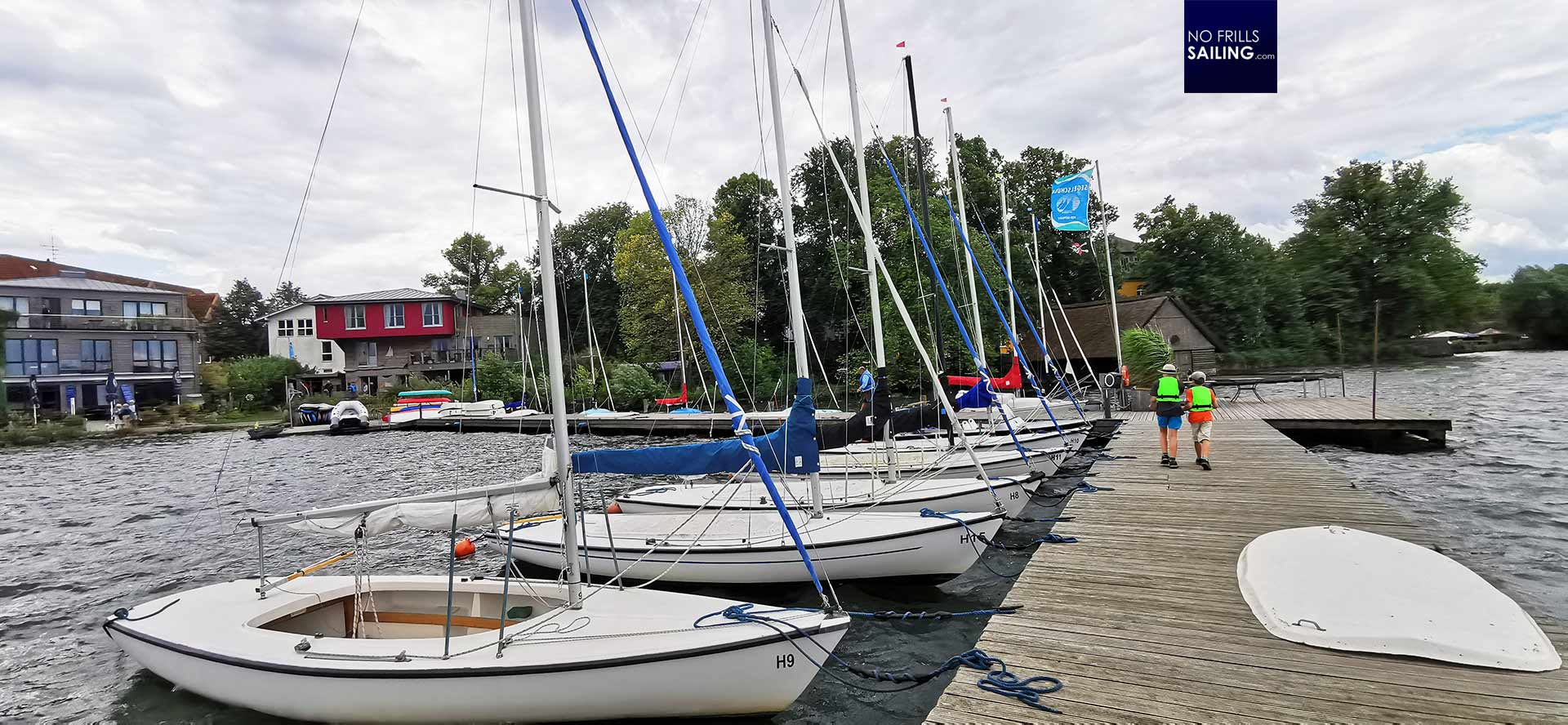
Absorbed in their chit-chat of recapitulating our little stormy adventure, I let them walk to the car with some distance. They are telling each other about their heroic deeds, about the perfect fast tack and the smoothest gybe. Pride little sailors, happy children: Mission accomplished, I shall say. As we drive home and call mom, both are overturning themselves in their stories, highlighting their latest adventure in the most colorful pictures. It´s so sweet to observe – and a joy to my heart as a sailing dad. We all can´t wait to cast off again, luckily, there are 5 weeks of summer vacation left …
You may as well like to read these connected articles:
Making your kids want to sail with you
Kid´s life jacket dress rehearsal
Our first real big sailing trip as a family
